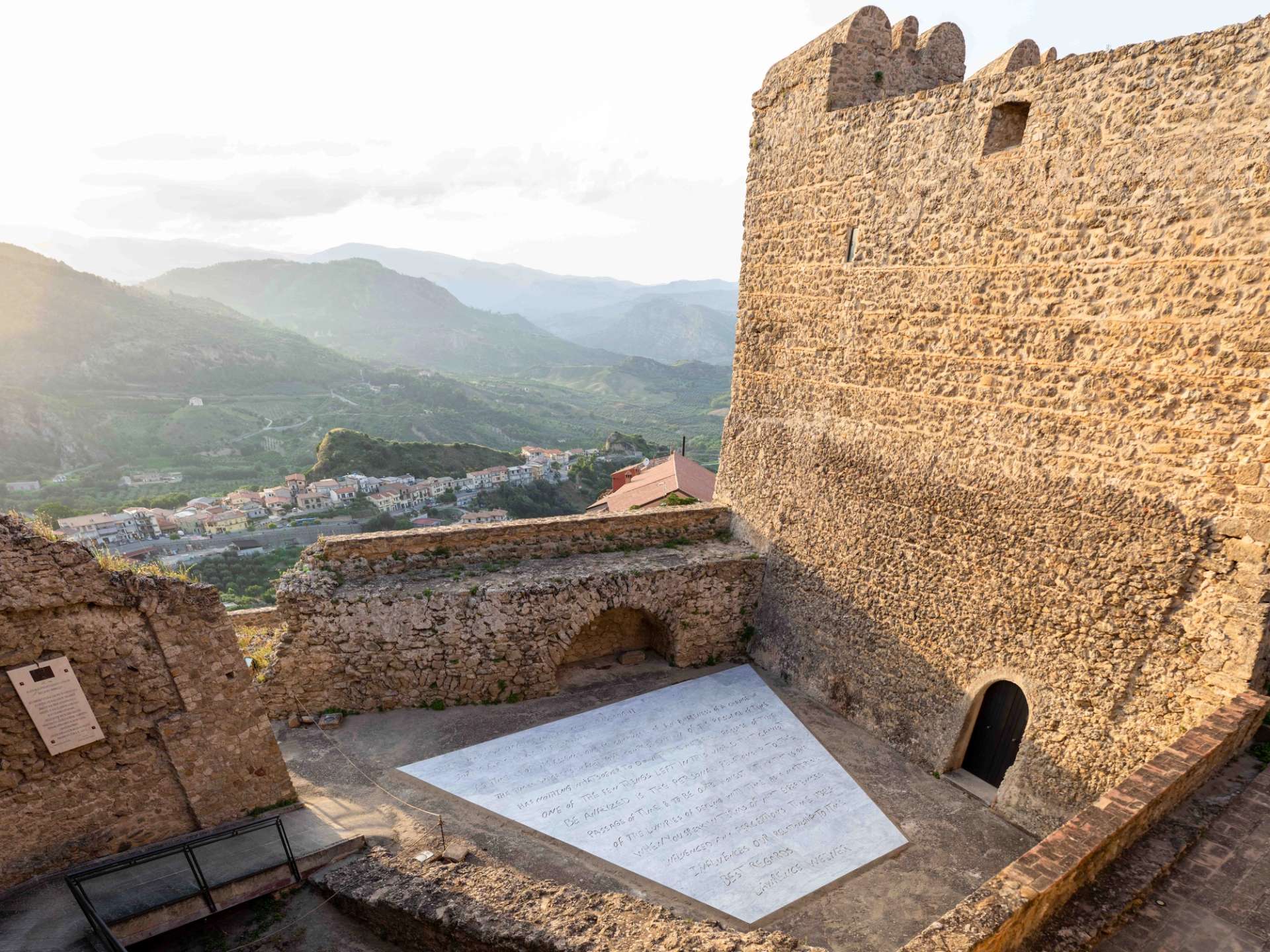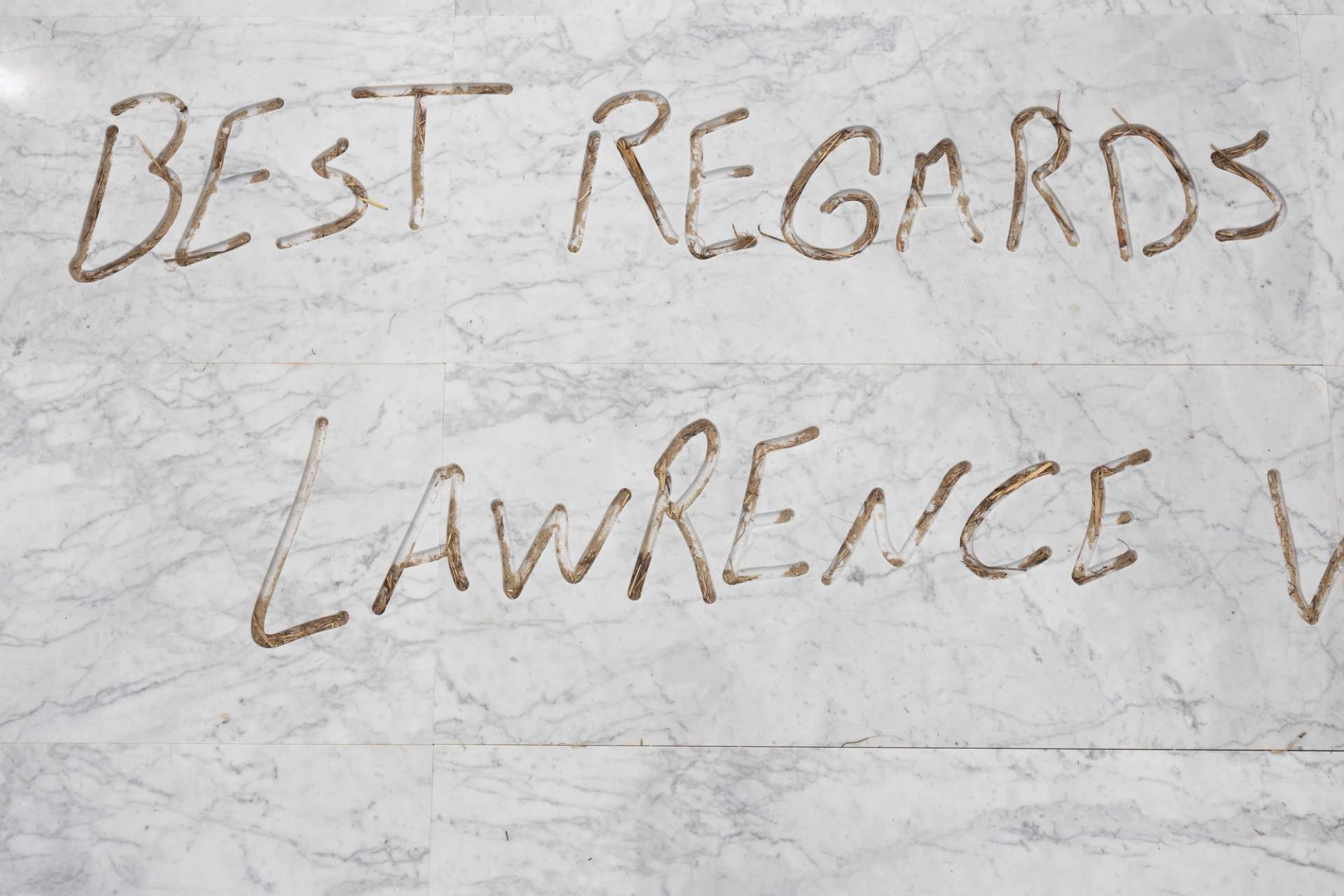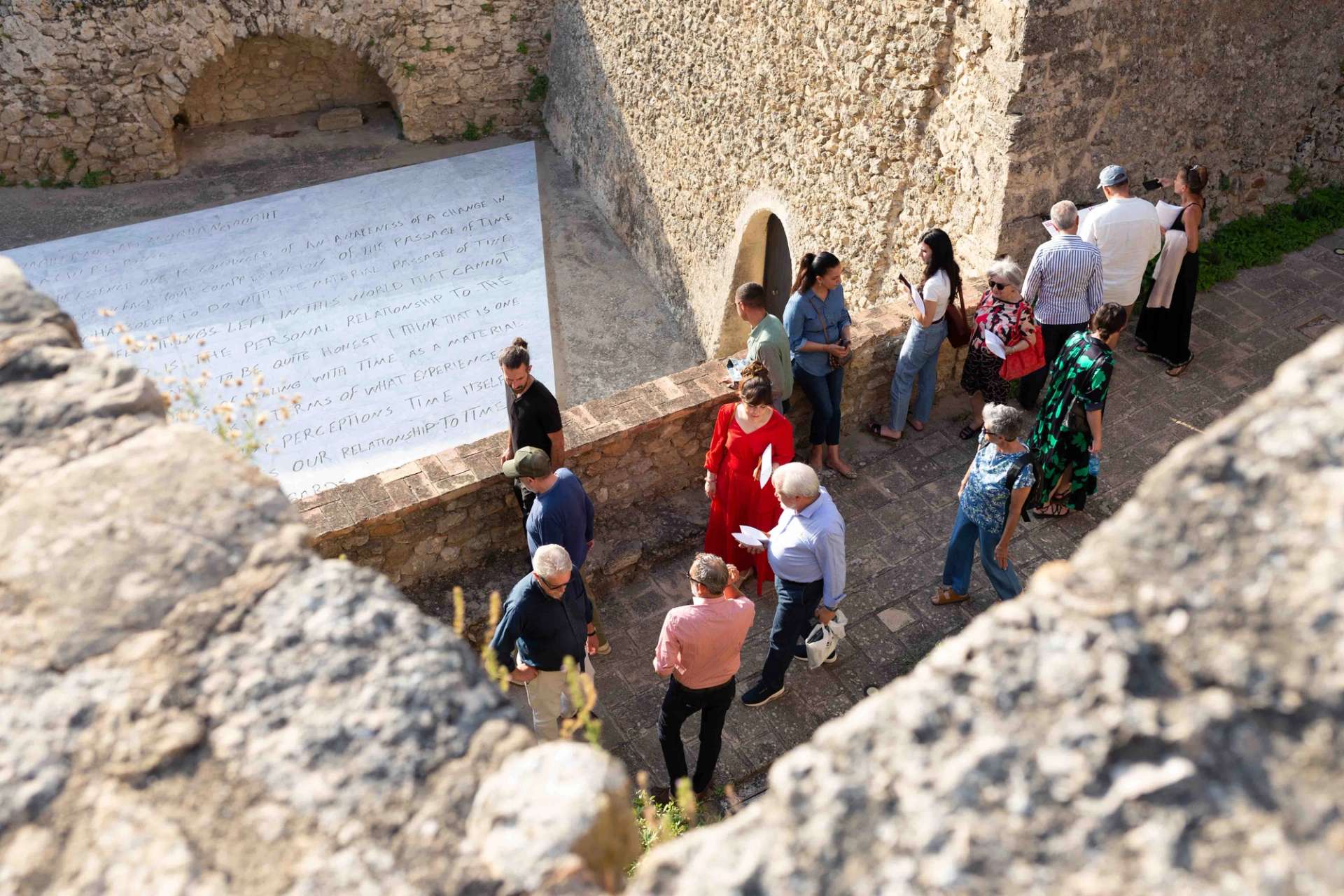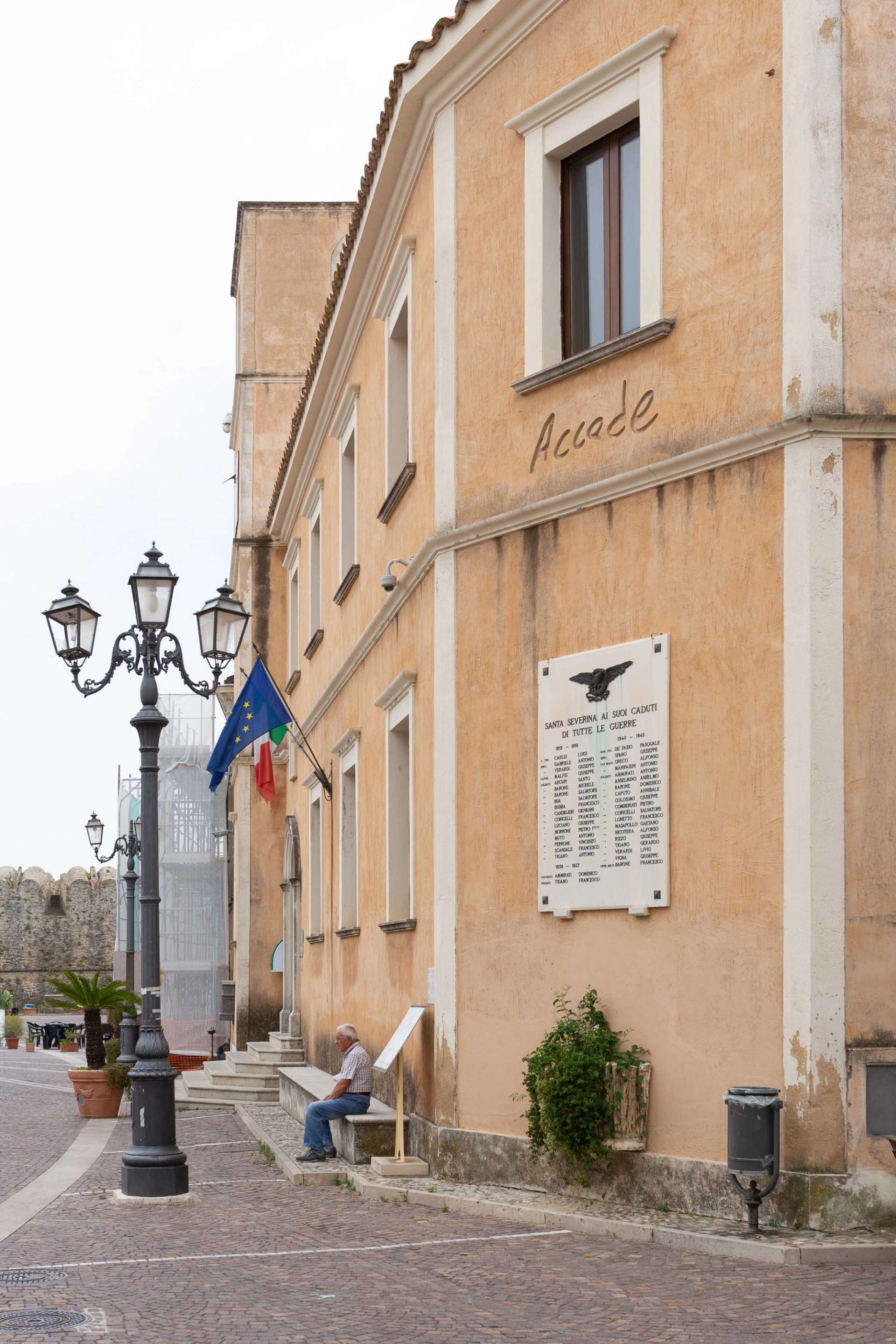Arriving in Santa Severina, as you drive the last few hairpin bends before reaching the walls, you catch a glimpse of the medieval village from afar, perched on a hill. This powerful and always unexpected vision gives the immediate feeling of being in a place outside time.
And it is precisely time and the relationship that people have with it throughout their lives that is central to Mohsen Baghernejad Moghanjooghi’s artistic quest.
In Santa Severina, Mohsen has created three works in which the written word becomes a material and, through different languages, yields to the artist’s expressive needs.
Accade invites reflection on climate change and the indeterminacy of our perception of the time in which this is taking place. Here the word “Accade” (happens) refers to a continuous, indefinite time, highlighting an event that cannot be ignored and that affects everyone and everything, even a fairytale village like Santa Severina, suspended in its miniature everyday dimension; yet, it too is exposed to the impact of these transformations of enormous magnitude.
BellƏ, proiettile (Beautiful, bullet) is a reflection on beauty as the result of cultural stratification and the alternation of peoples. Here the artist exploits the imperceptible graphic difference between the two words engraved in Farsi, a difference represented only by a dot, to suggest a profound link between two apparently distant concepts.
The marble floor stems from a 2017 epistolary conversation between Mohsen and artist Lawrence Weiner, one of the pioneers of the 1960s and 1970s conceptual movement. The engraved text quotes in full a response from Weiner in this e-mail exchange centred on the relationship between man and time. This reply forever changed the Iranian artist’s idea of Time and decisively influenced his research.
ㅤ
ㅤ
Permanent works:
01. Mohsen Baghernejad Moghanjoogh, Accade, 2023. Wall engraving, variable dimensions.
Piazza Campo 21, Santa Severina (KR)
02. Mohsen Baghernejad Moghanjoogh, BellƏ, proiettile, 2023. Wall engraving, variable dimensions.
Corso de Risio n°6, Santa Severina (KR)
ㅤ
03. Mohsen Baghernejad Moghanjoogh, Senza titolo, 2023. Engraving on marble floor, 50mq approx.
Castello di Santa Severina, Piazza Campo, Santa Severina (KR)
ㅤ
SANTA SEVERINA IS LOADED WITH THE SURVIVAL DRAWINGS OF TIME, SO IT IS HISTORY; IT IS HISTORY THAT GIVES MEANING TO THAT ROCK, BUT TIME WITHOUT US DOES NOT EXIST
Mohsen Baghernejad Moghanjooghi (Tehran, 1988) lives and works in Turin, where he studied at the Academy of Fine Arts. He moved to Italy in 2011, after working for five years in his hometown as an assistant in an architecture studio. He then began working as a textile designer for a studio in Como. He has taken part in solo and group exhibitions, as well as artistic residencies in Italy. His most recent activities include: PerPIRUZ, Bastione association (TO, 2021); Dalle 5:00 alle 7:00, Raffaella De Chirico Arte Contemporanea (MI, 2021); Paesaggi Personali, ME Vannucci art gallery (PT, 2021); It’s Cause and Cure, ARS SPACE (TO, 2021).
THE ARTIST CREATES THE INTERVENTION "D'IO, BIO" COMPOSED OF THREE WORKS IN WHICH THE WRITTEN WORD BECOMES MATTER AND BENDS TO ITS EXPRESSIVE NEEDS
Of Byzantine origins, Santa Severina has around 2,500 inhabitants. Perched on a rocky knoll dominating the Neto Valley, midway between the Ionian Sea and the Sila mountains, it has an illustrious millennial history intertwined with famous personalities of temporal and spiritual power. The centre of the town is the Castle, where visitors can see the archaeological museums, presenting artefacts from ancient indigenous populations, the Ancient Greek colonisation of the West, and Byzantine, Norman, Swabian, Angevin, Aragonese and feudal influences. In the castle's ancient Byzantine cistern is the new Valle del Neto municipal wine winehouse: an important showcase for the area, presenting the wineries bordering the legendary river Neto. The castle dominates Piazza Campo, whose impressive buildings include the Romanesque cathedral and the Archbishop's Palace with the Diocesan Museum of Sacred Art, an authentic treasure chest of historical and artistic beauty that tells the story of the Byzantine metropolis established at the end of the 9th century. A majestic presence on the same square is the Baptistry, the oldest ecclesiastical monument open for worship in Calabria, a jewel of 7th-9th century Byzantine art. The beauty of the town, well-kept and harmonious and with a unique environmental heritage, does not end with its monuments: in fact, it also includes one of the SIC (Sites of Community Importance) areas of the Marquisate of Crotone and Monte Fuscaldo, and it represents a watershed between the valleys of the rivers Tacina and Neto.






